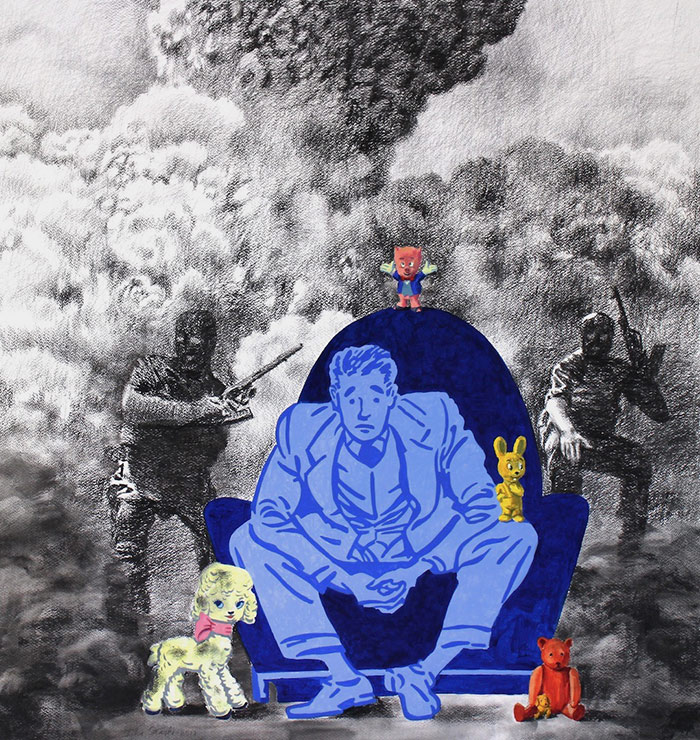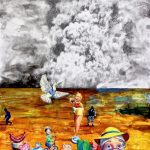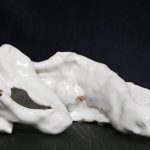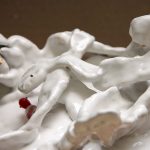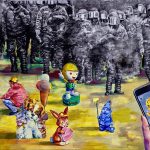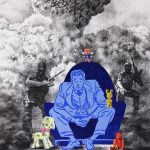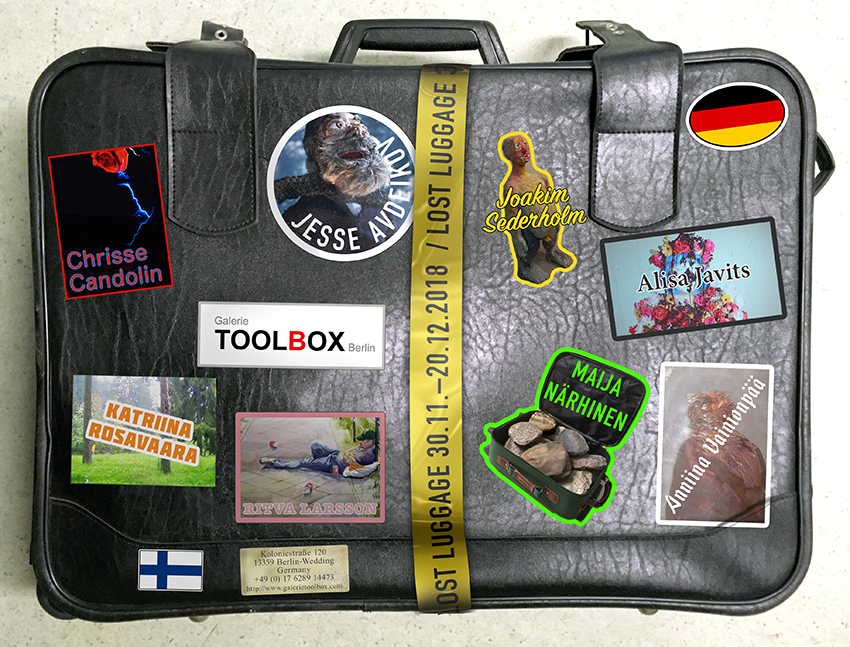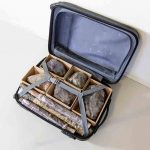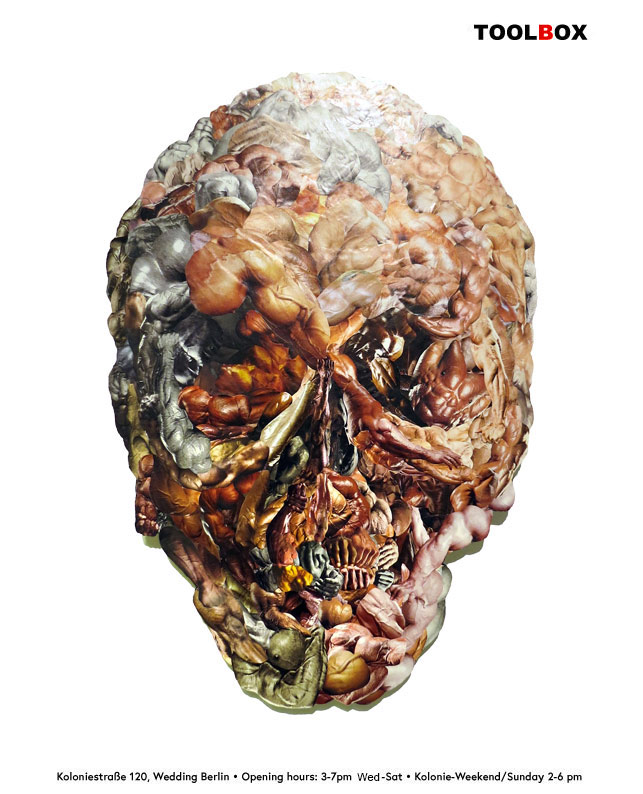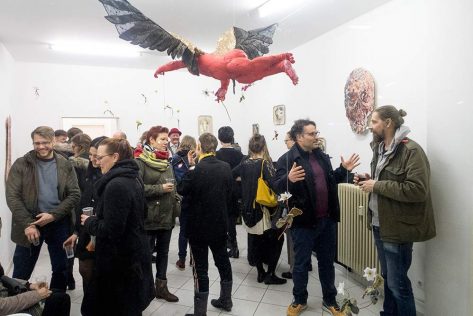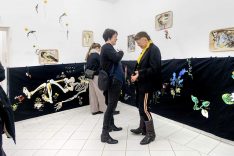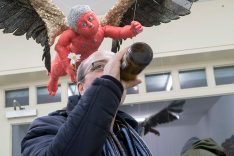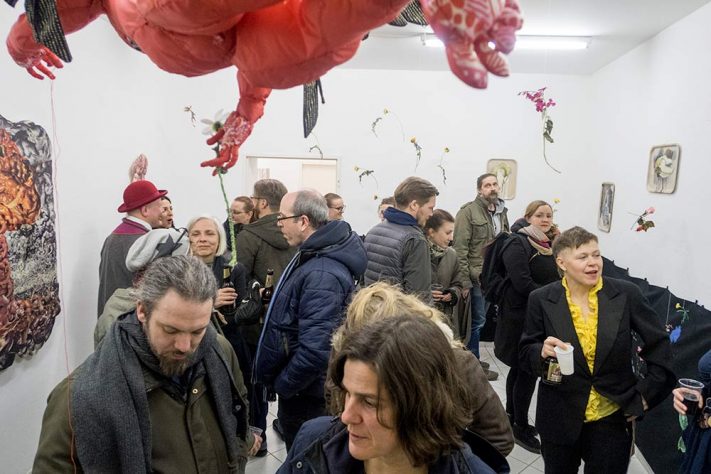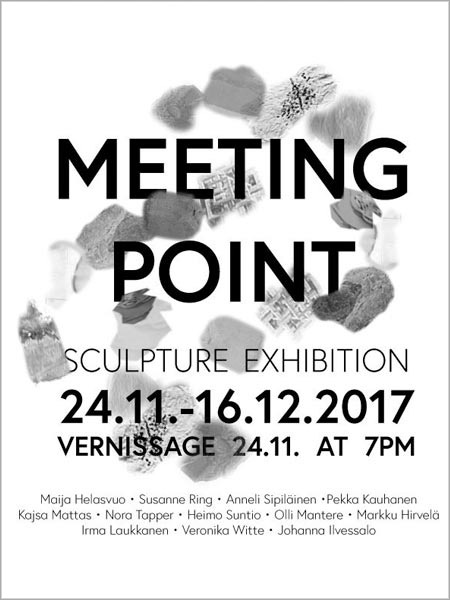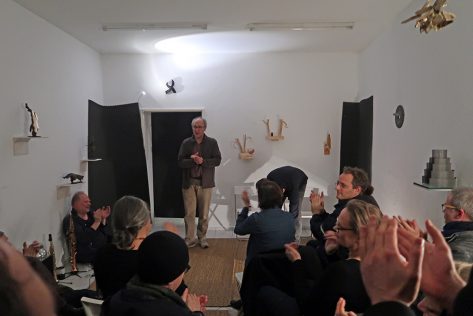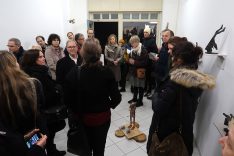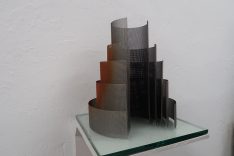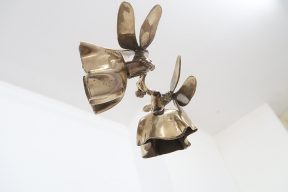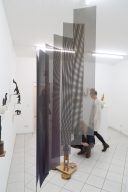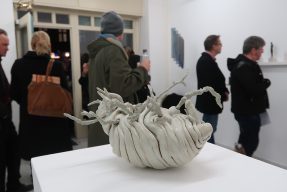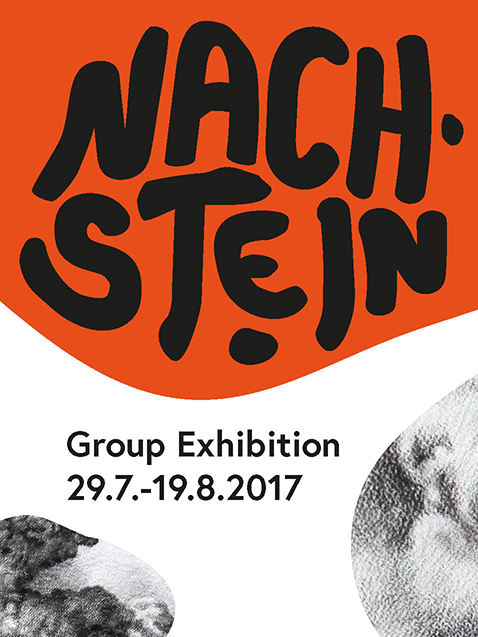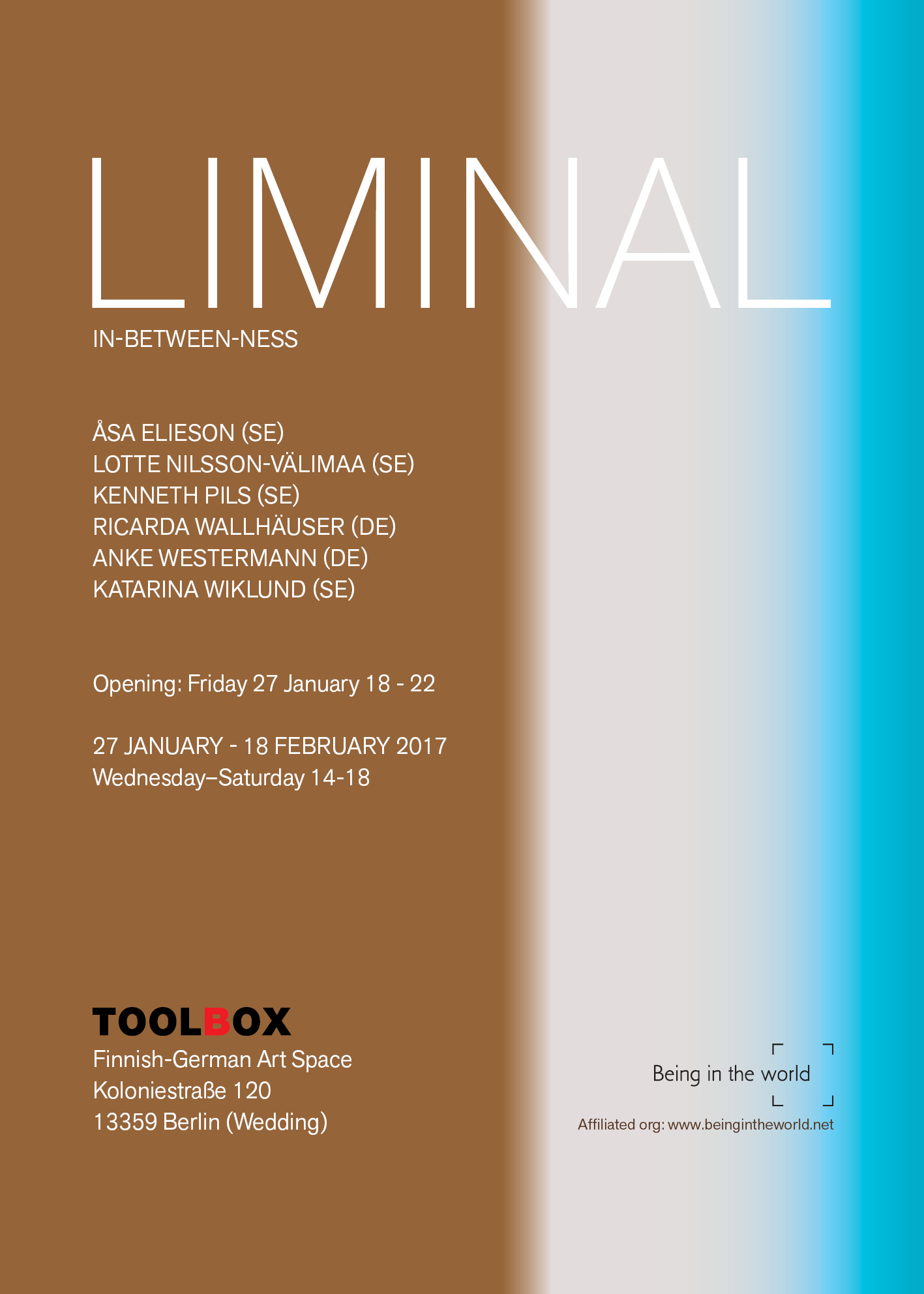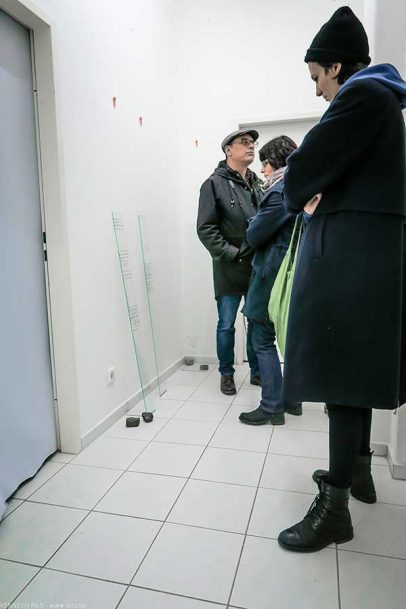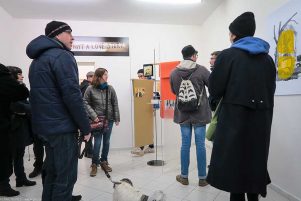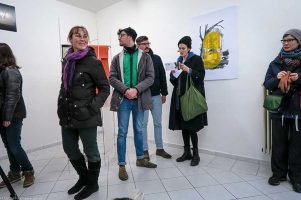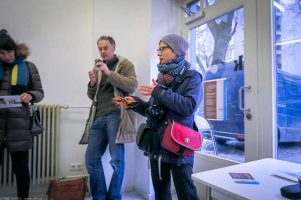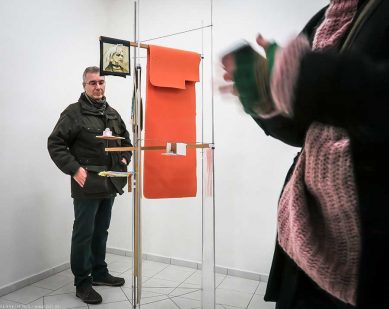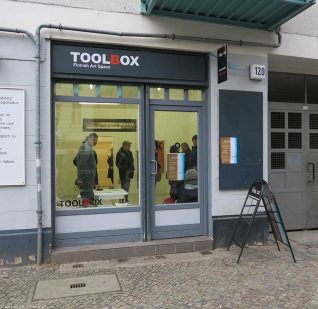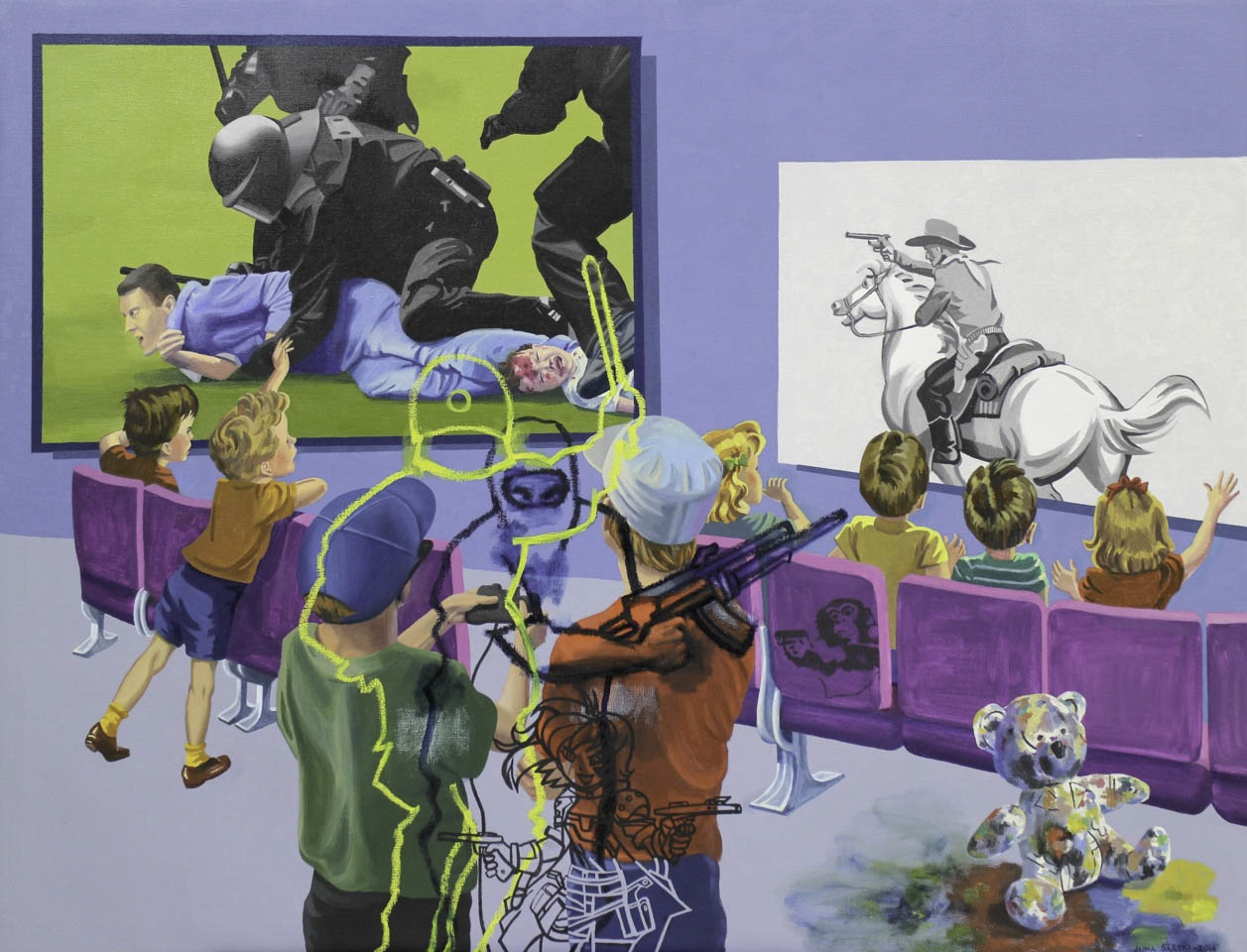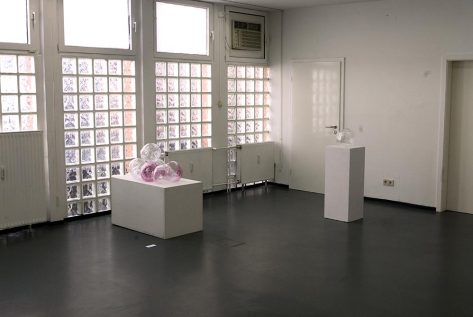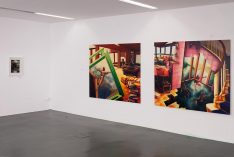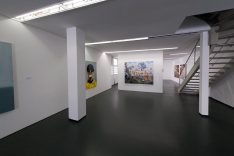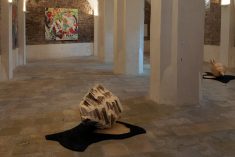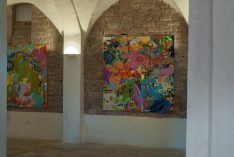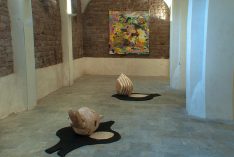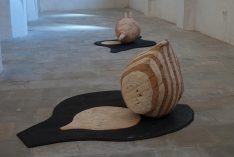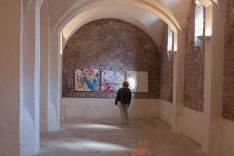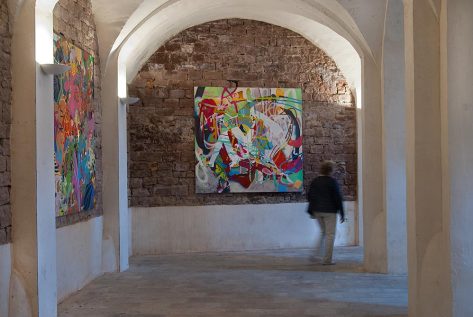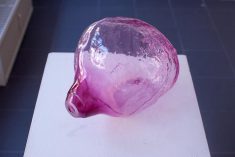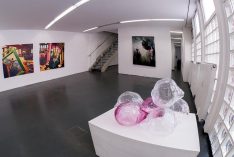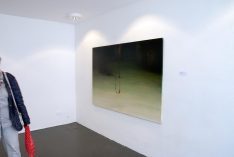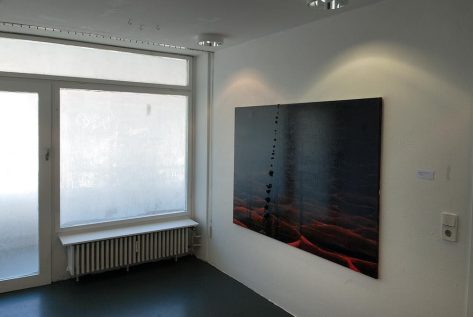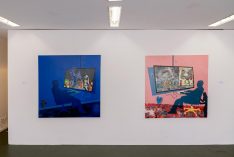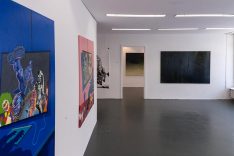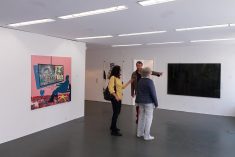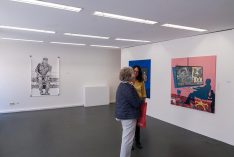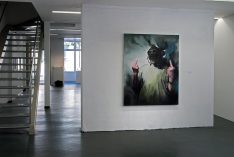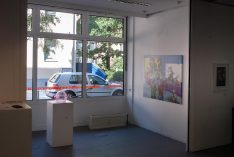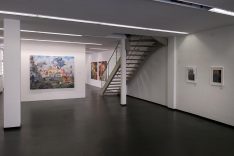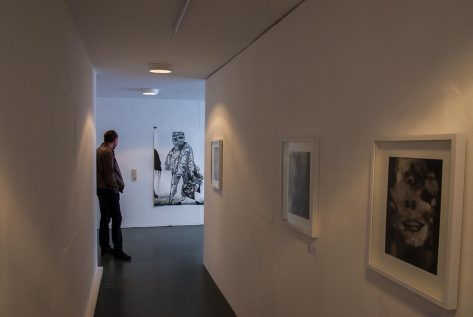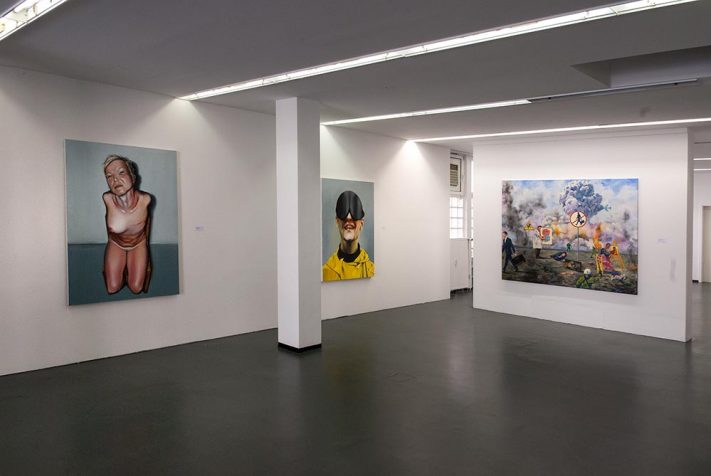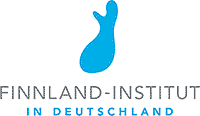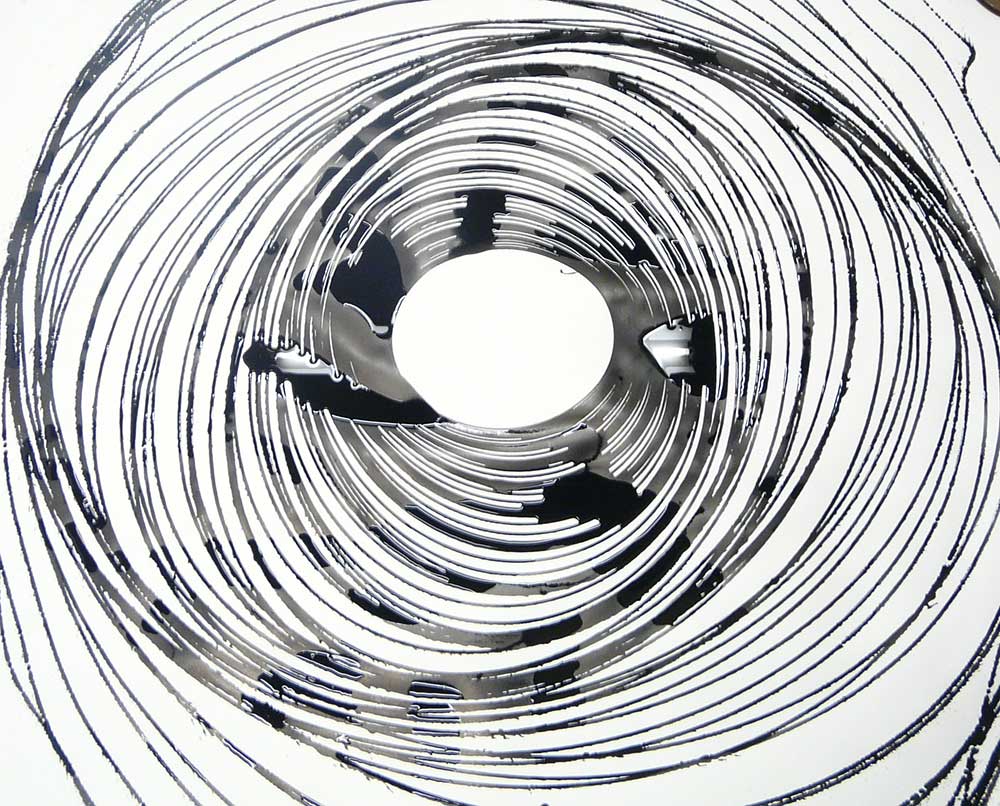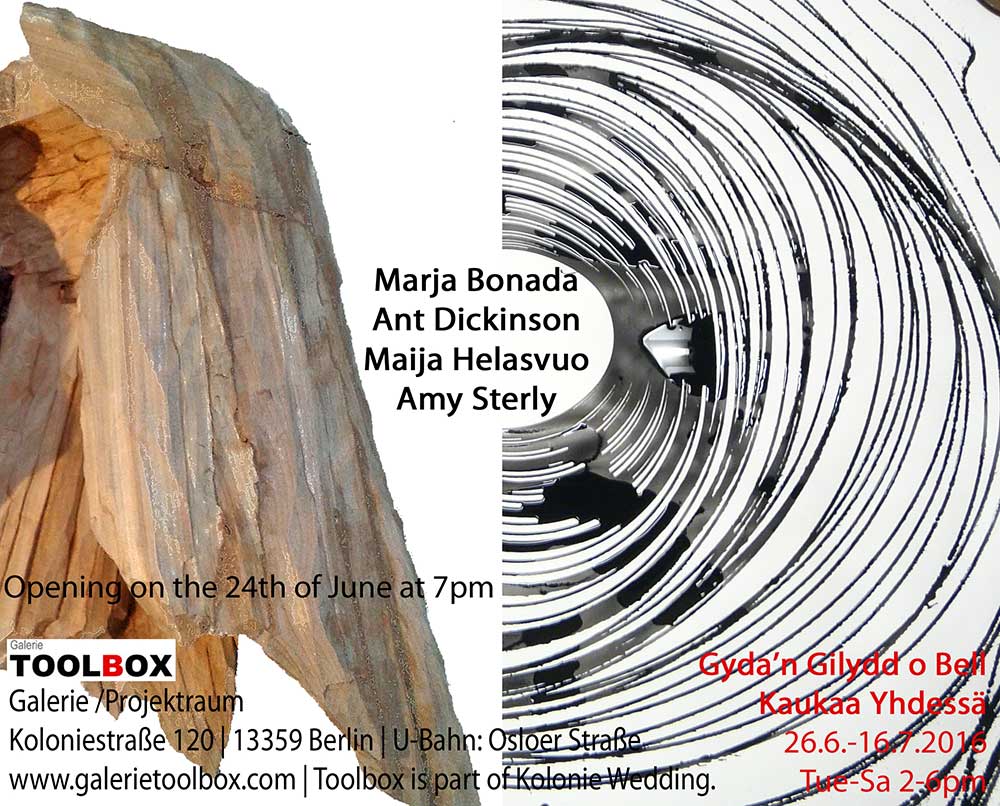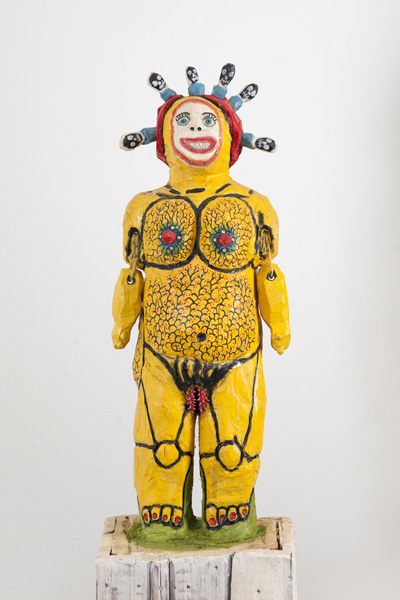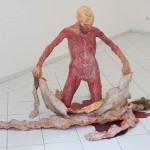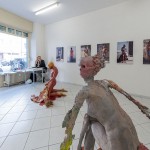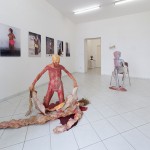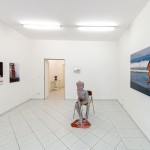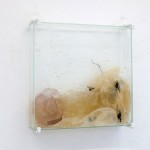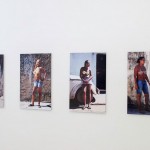JASMIN ANOSCHKIN & TAPANI KOKKO
Vernissage am Freitag, 27.11.2015 um 19 Uhr / Opening onFriday, 27.11.2015 at 7 pm
Herzlich Willkommen / Welcome
TOOLBOX – Finnish Art Space
Koloniestraße 120 | 13359 Berlin Wedding | U-Bahn Osloer Straße
Öffnungszeiten | Opening-times:
Welcome!
English | Suomi
Eine stolze Prozession
Bunte Holz- und Keramikarbeiten, Tiere und eigentümliche Menschen. Jasmin Anoschkin (* 1980) und Tapani Kokko (* 1969) sind Bildende Künstler aus Finnland, deren Werken eine raue Grundstimmung gemein ist.
Für ihre Skulpturen und Reliefs wurde Holz mit einer Kettensäge, Ton mit groben Gesten geformt. Anoschkin und Kokko haben gemeinsame Wurzeln in der Fantasiewelt der Kindheit, in Spielen und Spielzeugen. Anoschkin stellt sich ihre Tiere neben einem Geburtstagskuchen vor, während in Kokkos Arbeiten Cowboys und Skelette mit Schusswaffen spielen.
Kokko stellt die Neugier dar, die mit Sexualität verbunden ist, die Verwirrung von Heranwachsenden. Ein komikhafter Humor durchzieht seine Werke, inspiriert von der unverblümten Chuzpe primitiver Kunst, und er lässt seine Jungenfiguren zu Männern heranwachsen in einer Welt, in der Frauen stark, erotisch und mutig sind.
Anoschkin ist eine schillernde Expressionistin, die ihre Skulpturen so unverbraucht/frisch in die Welt entlässt, dass sie ein Empfinden von der Anwesenheit der Künstlerin vermitteln. Sie unterwirft sich nicht den ungeschriebenen Gesetzen der Bildhauerei und folgt keiner modernistischen Tradition.
Beide haben eine Neigung zu bemaltem und gefärbtem Holz als Werkstoff. Obwohl ihre Arbeiten bereits in einigen Gemeinschaftsausstellungen zu sehen gewesen sind, entstammen sie doch verschiedenen Welten. Anoschkins Welt ist eine der Märchen und der Tiere, während Kokkos Thema Menschen sind, besonders Kinder. Man kann beiden Werken ihre Nähe zur finnischen ITE (itse tehty elämä: selbstgemachtes Leben) ansehen, zur zeitgenössischen Volkskunst. Kokkos Arbeiten haben außerdem Bezüge zur südamerikanischen Volkskunst.
Die Ausstellung ist karnevalesk, aber hinter dem Komischen verbergen sich schwierige Fragen nach Verschiedenheit und nach der Möglichkeit, Unterschiede auszuhalten. Nobody is perfect – andererseits ist es genau die Unvollkommenheit, die auch Tiere menschlich macht.
Anoschkins und Kokkos Ausstellungen sind Gesamtinstallationen, in denen das Erzählen von Geschichten eine große Rolle spielt. Es kann aber auch jedes einzelne Werk für sich allein rezipiert werden. Dadurch kann sich die Geschichte der Einzelskulptur verändern, aber sie wird nicht ganz verblassen.
Offenbar haben die Figuren der beiden ein gesundes Selbstvertrauen, sie können über sich selbst lachen und sie sind stolz, so zu sein, wie sie sind. Wenn man den Mut aufbringt, sich mit den Skulpturen zu identifizieren, kann das eine ziemlich großartige Erfahrung sein.
Veikko Halmetoja, Kunstkritiker
A proud parade
Colourful wood and ceramics, animals and original, unconventional people – Jasmin Anoschkin (b. 1980) and Tapani Kokko (b. 1969) are Finnish visual artists, whose works share the same rough undertone.
The works are sculptures and reliefs. Wood has been sculpted with chain saw, and clay with crude touch. Anoschkin and Kokko have common roots, that lead to the imaginary world of childhood, plays and toys. Anoschkin imagines her animals by the birthday cake, while cowboys and skeletons play with guns in Kokko’s works. Also, Kokko depicts the curiosity connected to sexuality, the confusion of an adolescent human being. He applies cartoon-like humour, inspired by the honest gall of primitive art, and brings up his sculptures’ boys to men, in a world, where women are strong, erotic, and brave.
Anoschkin is a sparkling expressionist, who releases her works into the world so fresh, that they convey the genuine feeling of the artist’s presence. She doesn’t bow to the unwritten laws of the art of sculpting, nor does she follow the modernist tradition.
Painted and coloured wood is a natural material for them both. Although the sculptors have appeared in several joint exhibitions, their works come from different worlds. Anoschkin’s world of fairytales is the one of animals, while Kokko depicts the world of men, especially of children.
It’s easy to see that both are inspired by the Finnish ITE art, that is, the contemporary folk art. Furthermore, on Kokko’s sculptures and reliefs one can read tales belonging to and detect references to South American folk art.
The exhibition is carnivalesque, but laughter hides difficult questions of difference and enduring difference. Nobody is perfect; on the other hand it is the very imperfection that makes also animals human.
Anoschkin and Kokko break the conventions of setting up the works, as well. Their exhibitions are total installations, gesamtkunstwerk at its best, where story-telling plays an important role. Still, each work can be studied independently. Then, the story of the individual sculpture can change, but it will not fade away.
It seems that the sculptures’ characters have got brisk self-esteem, they can laugh at themselves, and they are proud to look like they do. When one has the courage to identify with the works, the experience will be empowering.
Veikko Halmetoja, art critic
JASMIN ANOSCHKIN & TAPANI KOKKO
TWO SUPERNATURAL MONKEYS FROM FINLAND
TOOLBOX – Finnisch-deutscher Kunstraum
Vernissage 27.11.2015, 19:00 Uhr
Ylpeä kulkue
Värikästä puuta ja keramiikkaa, eläimiä ja omalaatuisia ihmisiä – Jasmin Anoschkin (s. 1980) ja Tapani Kokko (s. 1969) ovat suomalaisia kuvataiteilijoita, joiden teoksissa on samanlainen rosoinen pohjavire.
Teokset ovat veistoksia ja reliefejä. Puuta on veistetty moottorisahalla ja savea muotoiltu ronskilla otteella. Anoschkinia ja Kokkoa yhdistää juurevuus, joka on vahvasti sidoksissa lapsuuden mielikuvitusmaailmaan, leikkeihin ja leluihin.
Anoschkin kuvittelee eläimensä syntymäpäiväkakun äärelle, Kokon teoksissa länkkärit ja luurangot leikkivät pyssyillä.
Kokko kuvaa myös seksuaalisuuteen liittyvää uteliaisuutta, kasvavan ihmisen hämmennystä aikuistumisen edessä. Hän tekee sen sarjakuvamaisen huumorin keinoin ja ottaa vaikutteita primitiivisen taiteen vilpittömästä julkeudesta. Hän kasvattaa veistostensa pojat miehiksi maailmassa, jossa naiset ovat vahvoja, eroottisia ja rohkeita.
Anoschkin on räiskyvä ekspressionisti, joka laskee teoksensa maailmalle niin tuoreina, että ne välittävät aitoa tunnetta taiteilijan läsnäolosta. Hän ei kumartele veistämisen kirjoittamattomille laeille eikä noudata modernistista veistoperinnettä.
Maalattu ja väritetty puu on molemmille luonteva materiaali. Lukuisissa yhteisnäyttelyissä esiintyneiden kuvanveistäjien teokset ovat silti eri maailmoista. Anoschkinin satumaailma on eläinten maailma. Kokko kuvaa enemmän ihmisten, lähinnä lasten maailmaa.
Molempien teoksissa on nähtävissä vaikutteita sekä erityistaiteesta että suomalaisesta ITE-taiteesta eli nykykansantaiteesta. Kokon veistoksissa ja reliefeissä on luettavissa myös tarinoita ja havaittavissa esteettisiä viittauksia eteläamerikkalaiseen kansantaiteeseen.
Näyttely on karnevalistinen, mutta naurun takana on aina vaikeita kysymyksiä erilaisuudesta ja erilaisuuden kestämisestä. Kukaan ei ole täydellinen, toisaalta juuri epätäydellisyys tekee eläimistäkin inhimillisiä.
Anoschkin ja Kokko rikkovat myös ripustuksen konventioita ja heidän näyttelynsä ovat kokonaisinstallaatioita, joissa tarinankerronnalla on tärkeä osa. Silti jokainen yksittäinen teos kestää itsenäisen tarkastelun. Erikseen nostettuna saattaa veistoksen tarina saattaa muuttua, muttei hiipua.
Tuntuu kuin veistosten hahmoilla olisi reipas itsetunto, kyky nauraa itselle ja ylpeys näyttää juuri siltä miltä näyttää. Kun teoksiin uskaltaa samaistua, on kokemus voimaannuttava.
Veikko Halmetoja, Taidekriitikko
